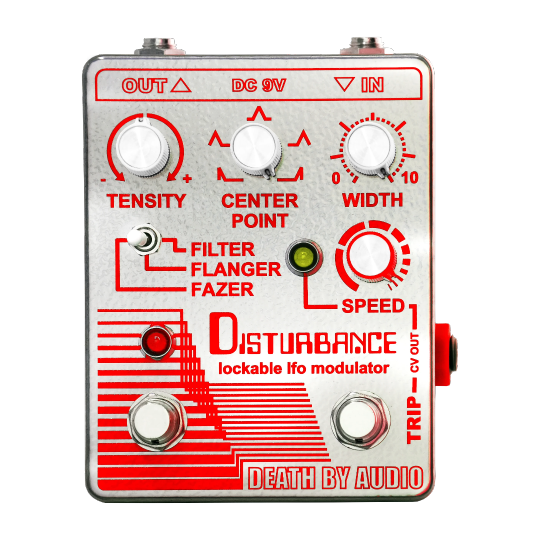#disturbance
Text

Maggie Nelson, from Bluets
[Text ID: “Is to be in love with blue, then, to be in love with disturbance? Or is the love itself the disturbance? And what kind of madness is it anyway, to be in love with something constitutionally incapable of loving you back?”]
#maggie nelson#love#madness#unrequited love#blue#disturbance#excerpts#writings#literature#prose poetry#lyric essay#fragments#selections#quotes#lit#words#typography#american literature
2K notes
·
View notes
Text

Moses Laufer - Adolescent Disturbance And Breakdown - Pelican - 1975
#witches#adolescents#occult#vintage#adolescent disturbance and breakdown#pelica books#disturbance#breakdown#moses laufer#1975
20 notes
·
View notes
Text

Earthquake Disturbance
2024
22 notes
·
View notes
Text


[death by audio] disturbance
#transparent#png#transparent png#transparent pngs#music pedal#graphic design#graphic art#resources#music producer#design archive#guitar pedals#modulation#death by audio#disturbance#death by audio disturbance#look at her lines i lovee#red#silver#chrome
25 notes
·
View notes
Text

46 notes
·
View notes
Text
His complexion became pale with anger, and the disturbance of his mind was visible in every feature.
"Pride and Prejudice" - Jane Austen
#book quote#pride and prejudice#jane austen#mr darcy#complexion#pale#anger#disturbance#visibility#rejection
4 notes
·
View notes
Text
But from the first moment of his entering the house Strange found himself subject to that peculiarly uncomfortable Natural Law which states that whenever a person arrives at a place where he is not known, then wherever he stands he is sure to be in the way. He could not sit because the room he had been placed in contained no chairs – presumably in case the French should somehow penetrate the house and hide behind them – so he took up a position in front of a window. But then two officers came in and one of them wished to demonstrate some important military characteristic of the Portuguese landscape, for which purpose it was necessary to look out of the window. They glared at Strange who moved to stand in front of a half-curtained arch.
Meanwhile a voice was calling every moment from the passageway for someone named Winespill to bring the gunpowder barrels and to do it quickly. A soldier of very small stature and with a slight hunchback entered the room. He had a vivid purple birthmark on his face and appeared to be wearing part of the uniform of every regiment in the British Army. This, presumably, was Winespill. Winespill was unhappy. He could not find the gunpowder. He hunted in cupboards, under staircaises and on balconies. He called back every now and then “One moment!” – until the moment came when he thought to look behind Strange, behind the curtain and under the arch. Immediately he shouted out that he had found the casks of gunpowder now and he would have seen them earlier only Someone – here he gave Strange a very black look – was standing in front of them.
— Jonathan Strange & Mr Norrell (Susanna Clarke)
#book quotes#fantasy fiction#historical fiction#alternate history#susanna clarke#jonathan strange & mr norrell#jonathan strange#winespill#strangers#discomfort#annoyance#disturbance#nuisance#awkwardness#embarrassment
19 notes
·
View notes
Text
Dealing with Eating Disorders: Anorexia and the Importance of Balanced Nutrition

Dealing with Eating Disorders: Anorexia and the Importance of Balanced Nutrition
Here's an overview:
Introduction to Eating DisordersSigns and Symptoms
Emotional Impact
Seeking Professional Help
Importance of Balanced Nutrition
Understanding AnorexiaSigns and symptoms of anorexia include:
Treatment for anorexia often involves a combination of:
Causes and Risk Factors of Anorexia
Signs and Symptoms of Anorexia
Diagnosis of Anorexia
Treatment Options for Anorexia
Cognitive Behavioral Therapy for Anorexia
Family-Based Treatment (FBT) for Anorexia
Medication and Nutritional Therapy for Anorexia
Supporting a Loved One with Anorexia
Conclusion and Recovery from Anorexia
Introduction to Eating Disorders
Eating disorders are complex mental health conditions that can have serious physical consequences. As someone who has struggled with anorexia, I understand the challenges and the importance of raising awareness about these issues. When it comes to eating disorders, it's crucial to remember that they are not just about food or weight; they often stem from deeper emotional and psychological struggles.
Signs and Symptoms
Restricting Food Intake: This can involve skipping meals, limiting caloric intake, or avoiding certain food groups.
Preoccupation with Weight and Body Image: Constantly checking weight, body measurements, or appearance in the mirror.
Physical Changes: Rapid weight loss, fatigue, dizziness, hair loss, and irregular menstruation in females.
Social Withdrawal: Avoiding social gatherings that involve food or making excuses to avoid meals.
Emotional Impact
Living with an eating disorder can be isolating and overwhelming. It's common to experience feelings of shame, guilt, and worthlessness. I found that seeking support from loved ones, therapists, or support groups was instrumental in my recovery journey. Remember, you are not alone, and it's okay to ask for help.
Seeking Professional Help
If you suspect you or someone you know is struggling with an eating disorder, it's essential to seek help from a healthcare provider. A comprehensive treatment plan may include therapy, nutritional counseling, and medical monitoring. Remember, recovery is possible with the right support and resources.
Importance of Balanced Nutrition
Nutrition plays a crucial role in recovery from anorexia. Working with a dietitian to create a balanced meal plan can help restore physical health and promote mental well-being. It's vital to nourish your body with a variety of nutrients and food groups to support healing and recovery.
As we delve deeper into understanding anorexia and its effects, it's essential to approach these topics with empathy, education, and a commitment to breaking the stigma surrounding eating disorders.
Understanding Anorexia
I have struggled with anorexia in the past, and I know firsthand how challenging it can be. Anorexia is not just about wanting to be thin; it is a serious mental health disorder that can have severe consequences if left untreated. People with anorexia often have an intense fear of gaining weight, distorted body image, and a relentless pursuit of thinness.
Signs and symptoms of anorexia include:
Significant weight loss: An individual may have a body weight that is significantly below a healthy range for their age and height.
Restrictive eating habits: Constantly monitoring food intake, avoiding certain foods, and restricting calories.
Intense fear of gaining weight: Obsessively weighing themselves and expressing intense anxiety about weight gain.
Distorted body image: Seeing themselves as overweight even when underweight.
Physical symptoms: Fatigue, dizziness, fainting, and hair loss.
If you suspect that you or someone you know may have anorexia, it is crucial to seek help from a healthcare professional. Anorexia can have serious health consequences, including organ damage, osteoporosis, and in severe cases, it can be life-threatening.
Treatment for anorexia often involves a combination of:
Nutritional therapy: Working with a registered dietitian to create a meal plan that ensures adequate nutrition.
Therapy: Cognitive-behavioral therapy (CBT) or other forms of psychotherapy can help address underlying issues and change harmful thought patterns.
Medical monitoring: Regular check-ups with healthcare providers to monitor physical health and address any complications.
Remember, recovery from anorexia is possible with the right support and treatment. It's essential to reach out for help and not try to battle this disorder alone.
Causes and Risk Factors of Anorexia
I. Causes of Anorexia:
Genetics: Some studies suggest that genetics play a role in the development of anorexia. If someone in your family has struggled with an eating disorder, you may be at a higher risk of developing it as well.
Psychological Factors: Anorexia is often linked to underlying psychological issues such as low self-esteem, perfectionism, and anxiety. These factors can contribute to a negative body image and a preoccupation with food and weight.
Societal Pressures: Living in a culture that idealizes thinness can also influence the development of anorexia. Media images promoting unrealistic body standards can contribute to feelings of inadequacy and drive individuals to extreme dieting behaviors.
II. Risk Factors of Anorexia:
Gender: Anorexia is more common in females, but it can also affect males. The pressure to conform to societal standards of beauty and thinness can impact individuals of any gender.
Age: Anorexia commonly begins during adolescence or young adulthood, but it can develop at any age.
Co-occurring Mental Health Issues: Individuals with other mental health conditions such as anxiety disorders, depression, or obsessive-compulsive disorder may be at a higher risk of developing anorexia.
History of Dieting: Previous experiences with dieting or weight loss efforts can increase the likelihood of developing disordered eating behaviors.
Traumatic Events: Trauma, such as childhood abuse or bullying, can also contribute to the development of anorexia as a coping mechanism.
Understanding the causes and risk factors of anorexia is essential in addressing and supporting individuals struggling with this eating disorder. By recognizing these factors, we can provide appropriate interventions and promote a healthier relationship with food and body image.
Signs and Symptoms of Anorexia
I have listed below some common signs and symptoms of anorexia that you should be aware of:
Severely restricted eating: I may notice that I am drastically limiting my food intake, often to the point of starvation, or only consuming tiny portions.
Intense fear of gaining weight: I might exhibit an overwhelming fear of gaining weight or becoming fat, even if I am underweight.
Distorted body image: I may perceive myself as overweight, despite being underweight.
Preoccupation with food, calories, and dieting: I may constantly think about food, counting calories, and researching diet plans.
Excessive exercise: I might engage in relentless and extreme exercise routines, regardless of fatigue or injury.
Physical symptoms: I may experience physical manifestations such as fatigue, dizziness, brittle nails, hair loss, and feeling cold all the time.
Social withdrawal: I might withdraw from social activities that involve food or gatherings where my eating habits may be scrutinized.
Secrecy around eating: I may start hiding or lying about the food I eat and avoiding meals with others to conceal my restrictive eating habits.
If you notice any of these signs or symptoms in yourself or a loved one, it is crucial to seek professional help and support as early intervention is key in treating anorexia effectively.
Diagnosis of Anorexia
I diagnose anorexia by conducting a thorough assessment that includes a physical exam, a review of medical history, and a discussion of eating habits and attitudes towards food. Here's how I go about diagnosing anorexia:
Physical Examination: I begin with a physical examination to check for any physical signs of anorexia, such as low body weight, fatigue, and brittle hair and nails.
Medical History Review: I take a detailed medical history to understand any underlying medical conditions or family history of eating disorders.
Discussion of Eating Habits: I have a conversation with the individual about their eating habits, including their relationship with food, any restrictive behaviors, and perceptions of body image. This helps me understand their mental and emotional state regarding food.
Assessment of Psychological Symptoms: I assess for psychological symptoms such as anxiety, depression, obsessive-compulsive tendencies, and distorted body image, as these are often present in individuals with anorexia.
Diagnostic Criteria: I also refer to the Diagnostic and Statistical Manual of Mental Disorders (DSM-5) criteria for anorexia nervosa, which includes criteria related to restriction of food intake, intense fear of gaining weight, and a disturbance in the way one's body weight or shape is experienced.
Overall, the diagnosis of anorexia is a complex process that involves a comprehensive assessment of physical, psychological, and behavioral factors. It is crucial to approach the diagnosis with sensitivity and empathy to provide the individual with the necessary support and treatment.
Treatment Options for Anorexia
When it comes to treating anorexia, it's essential to have a comprehensive approach that addresses both the physical and psychological aspects of this eating disorder. Here are the main treatment options available:
Medical Intervention:
I may require medical monitoring to address any physical complications that have arisen due to anorexia, such as malnutrition, electrolyte imbalances, or heart problems. It's crucial to work closely with healthcare providers to stabilize my health.
Nutritional Counseling:
Working with a registered dietitian can help me develop a balanced meal plan that meets my nutritional needs and supports my recovery. Learning how to nourish my body properly is a crucial step in overcoming anorexia.
Therapy:
Therapy plays a vital role in treating anorexia, especially since it's often linked to underlying emotional issues. Cognitive-behavioral therapy (CBT), family therapy, or other forms of psychotherapy can help me understand the factors contributing to my eating disorder and develop healthier coping mechanisms.
Support Groups:
Joining a support group for individuals struggling with eating disorders can provide me with a sense of community and understanding. Sharing experiences and receiving encouragement from others going through similar challenges can be incredibly beneficial.
Medication:
In some cases, doctors may prescribe medications to manage symptoms such as depression, anxiety, or obsessive-compulsive behaviors that often co-occur with anorexia. These medications should be used in combination with therapy and other treatments.
Remember, the road to recovery from anorexia can be challenging, but with the right treatment and support, it is possible to develop a healthier relationship with food and body image.
Cognitive Behavioral Therapy for Anorexia
I believe that Cognitive Behavioral Therapy (CBT) is a crucial component in the treatment of anorexia. Here are some reasons why I find CBT to be effective:
Identifying Negative Thought Patterns: In CBT, I can work with a therapist to identify and challenge negative thought patterns related to body image, self-worth, and food. This process helps me understand how these thoughts contribute to my behaviors.
Developing Coping Strategies: Through CBT, I learn effective coping strategies to deal with triggers that may lead to disordered eating behaviors. I can develop healthier ways to manage stress, anxiety, or low self-esteem without resorting to restrictive eating habits.
Changing Destructive Behaviors: CBT helps me replace harmful behaviors with positive ones. By addressing the underlying issues driving my anorexia, I can make sustainable changes towards a healthier relationship with food and my body.
Improving Self-Esteem: CBT can assist me in improving my self-esteem and body image perceptions. I can work on developing a more positive self-image based on realistic and healthy beliefs.
Building Relapse Prevention Skills: With CBT, I can acquire tools to recognize early warning signs of relapse and implement strategies to prevent a recurrence of anorexic behaviors. This proactive approach equips me with the skills needed to maintain recovery in the long term.
In conclusion, Cognitive Behavioral Therapy plays a vital role in addressing the psychological aspects of anorexia and promoting lasting recovery by changing negative thought patterns, developing coping strategies, and enhancing self-esteem.
Family-Based Treatment (FBT) for Anorexia
I have found that Family-Based Treatment (FBT) is a highly effective approach when dealing with anorexia. In FBT, the family plays a crucial role in the treatment process. Here are some key points about FBT:
Involvement of Family: FBT recognizes the impact of family dynamics on an individual with anorexia. It involves the entire family in the treatment process, focusing on empowering parents to take charge of refeeding their child.
Empowering Parents: The primary goal of FBT is to empower parents to become agents of change in their child's recovery. As a therapist, I work closely with parents to help them support their child in restoring a healthy relationship with food.
Phases of Treatment: FBT is typically divided into three phases. The first phase focuses on weight restoration, the second on returning control of eating back to the adolescent, and the third on promoting healthy adolescent development.
Non-Blaming Approach: FBT is non-blaming and aims to reduce feelings of guilt or shame within the family. It helps parents understand that anorexia is not anyone's fault but rather a serious mental health condition that requires treatment.
Evidence-Based: FBT is supported by research as an effective treatment for adolescent anorexia. Studies have shown that FBT leads to higher rates of full remission compared to individual therapy.
I have seen firsthand the positive impact that FBT can have on individuals struggling with anorexia. By involving the family in the treatment process and empowering parents to take an active role, FBT can help adolescents make significant strides towards recovery and long-term health.
Medication and Nutritional Therapy for Anorexia
I have found that medication can be a useful tool in the treatment of anorexia. In some cases, antidepressants may be prescribed to help manage symptoms such as anxiety and depression that often accompany anorexia. These medications can assist in improving mood and overall mental well-being, which can be crucial in the recovery process. It is essential to work closely with a healthcare provider to find the right medication and dosage that will be most effective for each individual.
Nutritional therapy is another key aspect of treating anorexia. Working with a registered dietitian who specializes in eating disorders can be incredibly beneficial. They can help create a meal plan that focuses on restoring a healthy relationship with food, ensuring that essential nutrients are being consumed, and supporting weight restoration in a safe and sustainable way.
Medication, particularly antidepressants, can help manage symptoms like anxiety and depression in anorexia.
Collaboration with a healthcare provider is crucial to finding the most effective medication and dosage.
A registered dietitian specializing in eating disorders can assist with creating a balanced meal plan.
The meal plan will focus on restoring a healthy relationship with food and supporting weight restoration.
As part of a comprehensive treatment plan, medication and nutritional therapy can play vital roles in addressing both the physical and emotional aspects of anorexia. It is important to remember that recovery is a journey, and finding the right combination of treatments may take time. Working closely with a team of healthcare providers including therapists, doctors, and dietitians can help ensure the best possible outcomes in the treatment of anorexia.
Supporting a Loved One with Anorexia
I have witnessed firsthand the challenges of supporting a loved one struggling with anorexia. Here are some ways to offer support:
Educate Yourself: Learn about anorexia to understand what your loved one is going through. Knowing the facts can help you provide better support.
Encourage Professional Help: Encourage your loved one to seek professional help from doctors, therapists, and nutritionists specialized in eating disorders.
Provide Emotional Support: Be there for your loved one, listen without judgment, and offer emotional support. Anorexia can be emotionally draining, so providing a safe space for them to express their feelings is crucial.
Promote a Positive Body Image: Avoid making comments about weight or appearance. Instead, focus on positive qualities unrelated to physical appearance.
Encourage Balanced Nutrition: Encourage your loved one to eat balanced meals and snacks. Offer to cook together or plan meals that are nutritious and appealing.
Avoid Power Struggles: It's essential to approach food and eating habits with empathy and understanding. Avoid power struggles or making them feel guilty about their eating habits.
Set Boundaries: While offering support, it's also important to set boundaries to protect your own well-being. Seek support for yourself through therapy or support groups.
Remember, supporting a loved one with anorexia can be challenging, but with patience, understanding, and professional guidance, you can help them on their journey to recovery.
Conclusion and Recovery from Anorexia
I have learned that recovery from anorexia is a complex and challenging journey that requires patience, commitment, and professional help. Here are some key points to consider during the recovery process:
Seek Professional Support: It is crucial to work with a team of healthcare providers, including doctors, therapists, and dietitians, who specialize in eating disorders. They can provide the necessary guidance and support to help you recover.
Establish Healthy Eating Habits: Creating a meal plan that focuses on balanced nutrition is essential for recovery. It is important to nourish your body with a variety of foods to support physical and mental well-being.
Challenge Negative Thoughts: Anorexia often involves distorted beliefs about body image and food. Cognitive-behavioral therapy can help challenge these negative thoughts and develop a healthier mindset.
Build a Support System: Surrounding yourself with supportive friends and family members can make a significant difference in your recovery journey. Opening up about your struggles and seeking help when needed is a sign of strength.
Practice Self-Care: Engaging in activities that promote self-care, such as mindfulness, yoga, or journaling, can help manage stress and improve overall well-being during recovery.
Monitor Progress: Keep track of your progress by setting achievable goals and celebrating small victories along the way. Remember that recovery is a gradual process, and setbacks may occur.
Remember, recovery from anorexia is possible with the right support and dedication. Taking care of your physical and emotional health is vital in overcoming this eating disorder. You are not alone in this journey, and seeking help is the first step towards a healthier and happier life.
#diet#dieting#psychological health#health & fitness#Anorexia#Eating disorders#disturbance#nutrition tips#nutrition and health#health
3 notes
·
View notes
Text
There's a big focus on "pristine" "undisturbed" spaces in most entry-level conservation spaces but disturbance is arguably a big part of any ecosystem.
I live on the east coast, we get hurricanes about once a year. Massive storm, rips trees out of the ground, drenches the soil, blows away anything not nailed down (and sometimes those too.) Terrible for, say, a forest, right?
Well... not exactly.
Some dead trees that were still standing might get blown away or knocked over, as will a good number that weren't deeply rooted enough to hold on. But that newly cleared space is an opportunity for new plants - and new trees - to grow, taking advantage of greater access to sunlight to claim their spot in the canopy or reproduce before a new tree takes over, leaving their seeds buried for the next opening. That rainwater will percolate into the soil, feeding all the plants already there and maybe giving some the boost they need to germinate. Cleared forest floor gives them the space to poke out of the soil and start growing. This is a yearly occurrence, of course the plants are going to be adapted to it.
Certain ecosystems actually depend on specific types of disturbance to be maintained, like fire-adapted forests that clear away dead brush and make room for new seeds to sprout. Those pinecones that only open after they've been burned? That's fire adaptation! The ecosystem needs that blaze to let new plants grow, and to keep the underbrush from building up so much that the next fire burns everything to the ground.
Intertidal communities have to survive being submerged and exposed to sunlight, which isn't an easy task for most marine organisms! Prairies get grazed and trampled by roving herds of bison, but they also get fertilizer in return from their poop. Deserts spend most of the year dry until lucky weather sends enough rain to make the land bloom; cacti are notoriously picky about when they flower because the wrong timing can kill them.
It's not the presence or absence of disturbance, it's the kind and intensity that matters. Cattle were disastrous for some US ecosystems because they weren't adapted to non-selective grazers that ate anything they could get in their mouths, leaving them nearly picked clean of edible plant life. Fire is essential to my local forests, but devastating to others. Some plants thrive specifically in disturbed areas, often as a sort of disaster recovery to restore the conditions needed by late-succession species to come back.
Disturbance is a part of ecosystems. There is no "pristine" nature, every member of the community is impacting something else. Humans are members of our ecosystems, just as much as a bird or bush. Instead of trying to separate ourselves from it, shouldn't we try to have a good impact?
#it speaks#nature#ecology#disturbance#nature is never untouched#everything is changing in tiny ways all the time
2 notes
·
View notes
Text

Hour of Penance - Disturbance (2003)
2 notes
·
View notes
Text
Some people are affected more by words (and thoughts) than they are by actions and their following results, and for other people it is the other way around. Thoughts and words leads to actions which in turn leads actions to thoughts and words, and onwards thereafter. This is in congruent, sometimes (albeit very rarely, being able to precept, recept t and connect it that is) even synchronious, motion. This vividly concurrent motion may, however, be interrupted from time to time, that is normal and bound to happen. During those times and occasions, it is then we are “positioned” with/in perceptibility and receptivity to find and gather most (of our) insight.
#Thoughts#disturbance#death#philosophy#Abnormalities#society#artificial intelligence#philology#etymology#Theory and praxis#Anomalies
5 notes
·
View notes
Text
youtube
ATTENTION Noisemakers and Sonic Experimenters: Death By Audio has done it again, this time around with the new Disturbance Lockable LFO Modulator Filter Flanger Phaser!! Holy Modulation, Batman!! Full Demo on tha YouTubez now...
#pedaloftheday#effectspedals#guitar#pedals#effects#pedalsandeffects#guitareffects#pedalboard#guitarist#guitarpedals#pedal of the day#pedals and effects#guitar pedals#guitar effects#death by audio#disturbance#modulator#modulation#filter#filter pedal#flanger#flanger pedal#phaser#phaser pedal#Youtube
7 notes
·
View notes
Text
Traumatized


My dear people looking at these...I don't even know what to call this I mean it makes me wanna cry but that's why I hired a personal therapist.😥
WTF now who would create this monstrosity I mean...
Look at zatz face
Look Jim has a 12 pack I think and armpit hair.
Kill me now😭😭😭😭😭😭😭😭
#treasure planet#jim hawkins#maya and the three#zatz the prince of bats#disturbance#disturbing content#monstrousness#mental illness#trauma#crying real tears#crying shaking throwing up
11 notes
·
View notes
Text

Disturbance (1846) | Adolph von Menzel
8 notes
·
View notes
Text

Challenge #03916-J264: Dramatic Deception
A knomira used to getting their way sits in a store and screams like a banshee when the customer they were screaming at and accused of lying when they denied being an employee pushed them away when the knomira grabbed an arm. The knomira let themselves fall to the ground scream like they'd been attacked, but proof was shown and the knomira would have to face the consequences for their actions. -- Anon Guest
The problem with multiple people using the same tactic, is that other people find ways around it. The problem with the people prone to using that tactic, is that they're not bright enough to come up with new ones.
Screaming and crying and flailing on the floor should never be used as a manipulation tactic by anyone over three years of age, anyway.
"I was violently attacked," wailed the white woman. "Your employee attacked me! I'm gonna sue him! I'm gonna sue you! I'm gonna sue your whole corporation! I have a whole legal corporation on my side!"
[Check the source for the rest of the story]
3 notes
·
View notes
Text
EyeHateGod - Disturbance
#EyeHateGod#Eyehategod#Disturbance#Full-length#Release date:#September 9th#1993#Genre:#Sludge/Doom Metal#Themes:#Misanthropy#Suffering#Drug abuse#Crime#Poverty#USA
4 notes
·
View notes